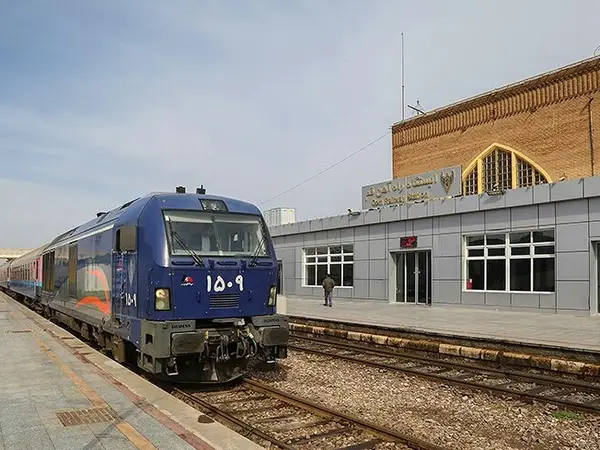China is lending Iran around $2.3 billion for a fast train project between Qom and Esfahan with a substantial interest rate, Tehran daily Shargh has reported.
In an article by economy writer Maryam Shokrani on Saturday [July 2], Shargh reported that China has already opened a letter of credit for the project and will complete the payment of the 15-billion-yuan loan until 2024.
The loan is scheduled to be repaid until 2029 and the interest charged will boost Iran’s debt to almost 22 billion yuan, or $3.2 billion.
The reformist paper, which is relatively independent from the government, although under the rules of censorship in Iran says that the project has little economic justification, as passenger rail service in the country is a money loser. Instead, vital economic railway projects in the north and in the south-east have been languishing for years.
As an example, the report mentions a planned railway connection between the Arabian Sea port of Chabahar and the city of Zahedan Sistan-Baluchistan province. Iran has been hoping that the port will boost transit of goods not only for its local market but also to other countries. India made investments in the development of Chabahar with the hope of avoiding Pakistan in shipping goods to Iran, Afghanistan and other countries to the north.
Shargh argues that as has been the case in many other less-developed countries, China is in the business of financing similar projects and if repayment in cash proves difficult, it takes oil and minerals instead.
Iran’s foreign and international trade policies have tilted toward China in the last decade, following a policy of ‘looking East’ espoused by the country’s ruler, Supreme Leader Ali Khamenei. Tehran inked a 25-year strategic cooperation agreement with Beijing last year, which has proven controversial among some Iranians.
The issue is that Tehran has been quite consistent in following an anti-West and an anti-Israel foreign policy in the Middle East, supporting a variety of militant organizations, developing ballistic missiles and pursuing a nuclear program. This first brought about international sanctions from 2007-2015 and then United States crippling sanctions in 2018.
The restrictive measures have considerably weakened its economy and mostly eliminated infrastructure development projects.
A former Iranian railway official, Mahmoud Heshmati told Shargh that the Qom-Esfahan fast train project has no economic justification. Turkey and Saudi Arabia have launched limited speed trains, but they are countries that serve millions of foreign visitors, while international tourism in Iran is negligible.
Iran, which before the establishment of the Islamic Republic was a popular destination for Westerners in the 1960s and 70s, now has only small groups of international visitors. There are two major reasons. One is strict Islamic rules such as hijab for women, and a ban on alcoholic drinks and the other is years of arbitrary arrests of foreign visitors for purposes of exchanging prisoners with Europe, the United States, and even Australia.
Another former official told Shargh that the Qom-Esfahan project has a 16-year history, but successive government hesitated because of a host of technical challenges. There was no need to take a loan from China, which would be hard to repay with its high interest.
The former official argued that private Iranian capital played a major role in economic development in the United Arab Emirates and other regional countries, while it stays away from Iran. “The reason is that domestic investors are pressured in Iran,” he said. But for the Chinese, it is just the opposite.
